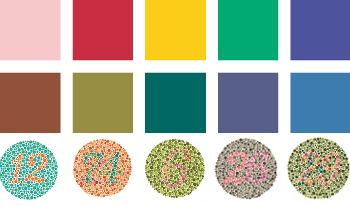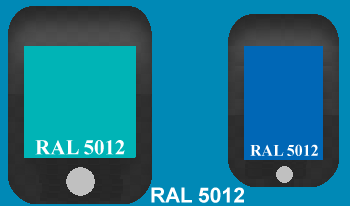
The topic of how colour emotion and colour vision deficiencies interact with each other is barely researched, and existing studies have contradicting results. This study will investigate how these two topics interact with each other and try to prove that colour emotion is affected by colour vision deficiencies. This was done through an online colour-emotion associations questionnaire in two phases. The first phase had 60 participants, of which 15 reported having colour vision deficiencies and the second had 18 participants, of which 8 were identified to have colour vision deficiencies. Within the questionnaires, the participants selected emotions from the Geneva Emotion Wheel which they associated with 12 colour patches or 4 colour terms and then rated how strong this association is from 1 to 5. Results show indications that colour vision deficiencies lead to reduced strength of colour-emotion associations and a higher number of people who do not associate emotions with certain or all colours. Additionally, it was found that the colour vision deficiency group associates fewer emotions with each colour than the normal vision group and differences in specific colour-emotion associations were found between the two groups.


The modulation-transfer function (MTF) is a fundamental optical metric to measure the optical quality of an imaging system. In the automotive industry it is used to qualify camera systems for ADAS/AD. Each modern ADAS/AD system includes evaluation algorithms for environment perception and decision making that are based on AI/ML methods and neural networks. The performance of these AI algorithms is measured by established metrics like Average Precision (AP) or precision-recall-curves. In this article we research the robustness of the link between the optical quality metric and the AI performance metric. A series of numerical experiments were performed with object detection and instance segmentation algorithms (cars, pedestrians) evaluated on image databases with varying optical quality. We demonstrate with these that for strong optical aberrations a distinct performance loss is apparent, but that for subtle optical quality differences – as might arise during production tolerances – this link does not exhibit a satisfactory correlation. This calls into question how reliable the current industry practice is where a produced camera is tested end-of-line (EOL) with the MTF, and fixed MTF thresholds are used to qualify the performance of the camera-under-test.

Expert advice and conventional wisdom say that important information within a statistical graph should be more salient than the other components. If readers are able to find relevant information quickly, in theory, they should perform better on corresponding response tasks. To our knowledge, this premise has not been thoroughly tested. We designed two types of salient cues to draw attention to task-relevant information within statistical graphs. One type primarily relied on text labels and the other on color highlights. The utility of these manipulations was assessed with groups of questions that varied from easy to hard. We found main effects from the use of our salient cues. Error and response time were reduced, and the portion of eye fixations near the key information increased. An interaction between the cues and the difficulty of the questions was also observed. In addition, participants were given a baseline skills test, and we report the corresponding effects. We discuss our experimental design, our results, and implications for future work with salience in statistical graphs.

